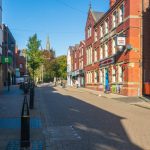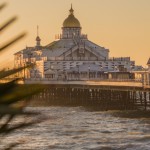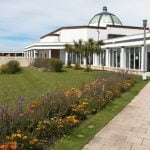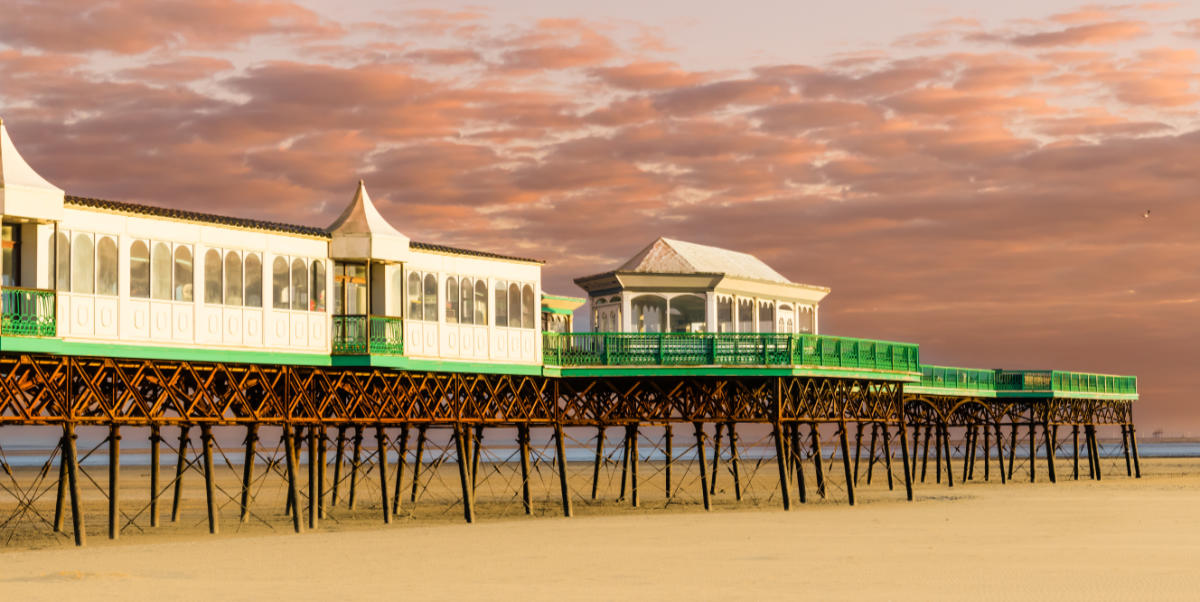
Fancy a trip to the coast but feel like Blackpool is too busy? Lytham St Annes could be the place for you.
Making new memories with your family is never easier than when you spend time near the sea. Coastal adventures to populated areas, busy with lights and sounds, maybe one way to do it, but what if you like the quiet life? Finding serene places for seagulls to steal your sandwiches is a different breed altogether. You can create tailored family vacations which feature sun, sea, sand, and whichever quiet, rural pastime you want to include.
So, if a day on the quiet sands of the Fylde Coast sounds great, but you hate that hustle and bustle of Blackpool, Lytham St Annes could be exactly the staycation destination you have been searching for.
The Early History of Lytham St Annes
Nowadays Lytham almost touches Blackpool, but it would not always have been so. Situated on the Ribble Estuary, the town grew as a trading point or stopping place between Blackpool and other towns south along the coast. Access to fresh fish would have seen the early inhabitants on a healthy diet. The earliest recorded name of the town is Lidun, but by the time of the Domesday Survey, it evolved to Lithun. In 1347, another record has the name as Lethum.
Lytham and the surrounding coast have seen human occupation since the Bronze Age. History resources mention that there were Viking settlers here, who came over in the 900s. Contrary to widespread belief, the Vikings did raid down the west coast. They just raided the east coast of Britain first. The longer Viking times went on, the fewer pickings you could find.
There have been Roman coins found on the site of Lytham Hall. What is so interesting about this is that the building was a former Abbey. Lytham Hall did not exist in Roman times. However, there was a building here or a collector later. Lytham Hall marks near enough the beginning of the town as we know it today. The Hall was part of the estate gifted to Richard Fitzroger by the crown estates in 1199. This was a period of great religious prevalence in Britain. The church was everywhere up until 1539 and Henry VIII’s dissolution of the monasteries.
The church was so prevalent here that Fitzroger gifted the lands to the Durham Benedictine order of monks. They stationed it with three or four monks and the priory gradually attracted people over time.
Medieval Times in the Borough of Fylde
Although the Lytham estates were part of a gift given in 1199, there were still people living there as of the 1086 Domesday Survey. As of that time, there was only Lytham in Amounderness, there was no St Annes until the 1800s. Since Lancashire did not exist then, Lytham was part of Yorkshire. The Domesday entry for Lytham is bleak. It shows no population, and that the area was partially wasteland. The owner had been Earl Tosti prior to 1066. After the invasion, ownership of the land passed to the new king. It took another hundred years to fall into the Fitzroger family and thus to the Benedictine monks.
By the 1600s, the monks evicted, and the hall became a manor under the watchful eye of Cuthbert Clifton. He bought the manor for £4,300. A notable sum in those days. The Lytham estate became the Clifton estate, and the family used it as their centre. A town grew up, attracted by all this new work. It had its own promenade which attracted city dwellers out to sea.
Fun Facts and Trivia About Lytham
At this point in our travel guides, we step away from the history for a bit of a breather. This is not Sunday School. No lectures allowed. Instead, let’s breathe life back into this operation with some fun facts and trivia about the area in question. What are the best things and the worst things about Lytham? We asked residents and found out that:
- There are four parts to the town or four quarters. There is Lytham, Ansdell, Fairhaven, and St Annes. St Annes is the part that touches the sea, and its full name is, in fact, St Annes-on-sea. We can’t be doing with all those hyphens.
- About 5.3 thousand acres of land here used to be a wasteland. The sand, wind, and rolling scrub, made it too uncertain to build upon. There was only sea to the south and St Annes didn’t exist yet. Farmers in town used the area to the north as arable farmland prior to the 1800s. The land grew out of the mouth of the river.
- When the monastery dissolved, the crown became Lord of the Manor, taking over the house and promptly selling it on again.
- A nearby settlement named Kilgrimol formed when Vikings became expelled from Dublin and took refuge on the western shores.
- St Annes-On-Sea takes its name from a small chapel of ease that the Clifton family built in the 1800s. The chapel attracted a parish, and the parish of St Anne’s became St Anne’s-on-Sea. Over the years, there have been turbulent arguments over whether the town should keep the apostrophe or not. Modern thinking is towards dropping it to keep the language as simple as possible. Darned Millennials just don’t like punctuation.
Let’s end the fun facts session and return to history. We were just getting into it.
The Industrial Era in St-Annes-On-Sea
Although Lytham grew slowly throughout the industrial era, the real rush came from St Annes. Back then, at the start of the 1800s, the town of Lytham stretched to the seafront only on the southern shore of that bend of land. Further north and east along the coast towards Blackpool was empty farmland. The area towards Lytham was known as Heyhouses. As Ansfield and Fairmarket grew up between Lytham and St Annes, Heyhouses declined on the coastal front and now occupy an inland space.
In 1624, the town had to pay two pounds, six shillings, and 2 and a quarter penny in taxes to their Hundred. By 1825, a local writer described Lytham by saying “If the company was less fashionable than Blackpool, it is generally more numerous and usually very respectable.” This era saw the beginning of Lytham St Anne’s growth as a sea-bathing town.
Popular With The Royals
Since Lytahm was a sea bathing town, a trend made famous by the royals of the time, it escaped the harmful effects of industrial-era Britain. A railway connected it to the rest of England in 1854. By 1863 the area had two separate stations. One was at St Annes and the other at Ansdell.
In 1848 the town received its market house, where traders bought and sold goods. They received a small hospital in 1871, the size of a single cottage. In 1865, the town created a long strip of grass called the green opened as a sort of promenade. They redesigned it in the early 1890s to include a walkway. At the height of the town’s fame as a sea bathing town, an electric tram ran from the coast to the town centre.
The town was supposed to turn into a resort by the end of the 1800s. Although the sale went ahead, the area never quite managed to attract business out of Blackpool. St Annes gave it a good run for its money though.
St Annes grew up as a separate resort town to the north in 1875. It formed around the parish and on the boundary with nearby Marton. The town included a home for the blind, three convalescent homes, an institute, a public hall, a promenade, and a pier. The town was the product of the St Anne’s on Sea Land and Building company in 1874.
St Annes grew up on a 999-year lease taken out from the Clifton estate – who still have hunting rights. They built a hotel, heavily campaigned to have the Ribble de-silted unsuccessfully, and opened the Floral Hall at the pier’s end in 1910.
Modern Day Lytham
Lytham and St Annes became one glorious town in 1922. Before then, each town gave towards the First World War. Amounderness saw use as a training ground for two newly formed regiments. Thousands of soldiers stationed themselves there and one of the country’s biggest army hospitals opened in Squires Gate. The area had two large munitions factories, too.
The area of Lytham St Annes runs a 1940s wartime festival every year to commemorate its use as a barracks town. The festival features music, dancing, speeches, and lots of dressing up. You can wander the war memorial and gardens at the east end of the main shopping piazza. The memorial became altered in 2001 to add the names of those soldiers who died in Afghanistan.
The Floral Hall almost burned down in 1874 after a fire. It was still in use as a skatepark up until 1982, when another fire destroyed it. After that second fire, locals had to destroy half the pier to make the area secure again. The hall remained demolished. Recent claims to fame include the Olympic torch passing through the town in 2012 on its way south.
Famous People from Lytham St Annes
At this stage, we like to reflect on all the celebrities who are associated with a town. Some celebs stayed there, others were born or brought up there, and occasionally we mention one that has played there if things are looking a bit thin on the ground. Usually, you can always find a footballer or 6. Football is the easiest way to find fame in the UK. Here are our favourite famous people from Lytham St Annes:
- Jonas Armstrong, who played Robin Hood in the TV series, stayed here
- There have been many famous footballers from Fylde and specifically Lytham St Annes. Including Joseph Anyon, Ian Crichton, John Craven, Henry Cameron, Stuart Hooper, David McNiven. Neil Mitchel, and a whole bunch more.
- Martin Miller, the cricketer.
- Human rights activist and filmmaker Brian Woods
- Comedian Roy Walker, famous for Catchphrase, lived here.
- Jenny Éclair from Loose Women lives here
- Although Les Dawson was not born in Lytham St Annes, he is buried here. There is a statue of him in a memorial garden to commemorate the fact.
There are a surprisingly high number of famous people from Lytham and St Annes, given that it is quite far north. Let us step away from history and forget about the famous faces for the time being. It’s high time we got to the best attractions in town.
The Best Things to See and Do in Lytham St Annes
This is the part of the travel guide where we tell you all about the best attractions in town. Here are the top things to see and do in Lytham St Annes.
Historic Sites
You cannot come to Lytham St Annes without stopping by Lytham Hall. It is different from the small house that the monks occupied. Lytham Hall is a Grade I listed building managed by Heritage Trust. It is situated inside its own parklands. The building has its own tea room and you can take a tour of the rooms. It has some stunning artwork on the walls dating from different periods.
There is a beautiful pond and there are plenty of photography opportunities throughout. Sir Cuthbert Clifton built the manor in the Jacobean style. In 1752, his descendant Thomas commissioned John Carr to build the house as we know and see it today. It’s an incredible example of architecture from the 18th century. Well worth the tour.
Landmarks
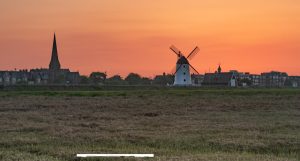
Image: mark mc neill/Shutterstock.com
Locals like to head to Fairhaven Lake as a meeting place. You can take a romantic pedalo journey out into the water, to hire a motorboat in a separate area. The area is set inside its own garden grounds, making for a lovely area to walk the dog, ride your bike, or enjoy the flowerbeds. This saltwater bay is situated in an area beside Granny’s Bay. At one time, locals harvested salt along this coastal stretch. The nearby settlement of Saltcotes is thought to have grown up around the salt harvesting industry. Fairhaven has a café, a basketball court, a picnic area, the RSPB Ribble Discovery Centre, and even crazy golf.
St Annes Pier is the largest landmark in the area. It still contains old slot machines and games. It combines modern shopping with Victorian architecture, which is a weird but pleasant mix. It features an amusement arcade, places to eat and drink, and lots of games to entertain the kids with. In terms of places to take the kids to in Lytham St Annes, it is second only to the large play areas in Lowther Gardens.
Galleries
Lytham St Annes has its own Art Society. There is also Oscars Fine Art and Framing if you need pictures framed or fine art for your décor. Lytham and St Annes Art Society has over 300 members and a website specifically set up to share information with them. The Studio is on Haven Road.
Museums
Lytham has a gorgeous little museum set inside an old windmill. The windmill combines with the house to form the lifeboat museum, because where else would you put a lifeboat museum other than inside a windmill? Makes perfect sense. The whole creation is the brainchild of the Lifeboat Heritage Group, and the proceeds go towards Fylde coast lifeboats. Inside, you can learn about the lives of the lighthouse keepers, and those of the mill workers in town. The building is part landmark, part quaint museum, and full-time afternoon out.
Outdoor Attractions
St Annes beach is one of the best attractions in the area. The whole reason that St Anne’s grew up in the first place was to take advantage of that beach. Sea bathing was popular under Edward I and his children. Queen Victoria liked to sea bathe, especially in her younger years.
Prince Albert was a great believer in it too, and he made his children go to the coast to enjoy the health properties. Those are much fewer now that the rivers are no longer clean. The seafront and beach at St Annes lie between promenades and piers. The tide does come in, but not usually all the way up. In the summer, the beach huts here are super busy.
There is a lovely park in the centre of St Annes that have incredible floral displays. Visit Ashton Gardens in St Annes during the spring and summer months to enjoy the full effects of the floral, fragranced, fare.
Golfing in Lytham St Annes
Lytham St Annes is home to the Royal Lytham & St Annes Golf Club, which has the premier course in town. It holds an open every year that attracts international stars of golf. There are four courses in this area, some are those sandy courses which developed in Scotland. These courses are windswept and interesting, with plenty of rolling dunes and sand to lose your ball in. Choose from the St Annes Old course with links, Lytham Green Drive golf course, or Minilinks Golf Course, all within the same town. Golf is big here. If you come during June or July, the chances are the accommodation prices will be higher due to the opens.
Other Sports and Teams
Lytham has its own football team: the St Annes Football Club. They have a 3-star FA accreditation and teach the under 5s. You can also stop by and see the Fylde Rugby Football Club in the Woodlands Memorial Ground on Blackpool road.
Shopping and Retail
Most of the shopping and retail in the area either takes place on the promenades or in the town centre. A few streets removed from the shore, you will find shops like Ripley’s of Lytham, the Room, and Belladonna selling you top-class goods.
Eating and Drinking
If you like to try small plates of tasters – and who doesn’t? Try Lytham House for some fine dining. The Lytham Kitchen is slightly less high-end but gets rave reviews. There are lots of cafes on the waterfront you can enjoy, too. If you want to drink fine ale, go to the Taps. If you want to drink cocktails, you go to the Grove or to Marvin’s of Lytham. Other popular pubs include the Ducks Nuts and the Gallery Wine Bar. Try not to think too much about the Ducks Nuts. We know that missing apostrophe is irritating.
Other Notable Attractions in Lancashire
Lancashire is full to brimming with important things to see and do. Enjoy the sites and sounds of these other nearby towns while you are visiting:
- Take a trip to Skem, they have a giant pipe.
- See if you can track down an undiscovered shipwreck on the sands of Poulton-le-Fylde
- Experience a day trip to the market town of Darwen
- Head into Lancaster and go shopping
- Learn about bricks in Accrington
- Or go to the little theatre in Chorley
When you have time on your side and access to Five Minutes Spare travel guides, there is nowhere in this country you can’t explore. Of course, you should use Google Maps to help you.
How to Get To Lytham St Annes
This should be the easy part, but our directional sense is lacking. Follow these directions if you are willing to live dangerously.
By Road
Head off the M5 on the M55 until you hit signs for Blackpool Airport, then follow the coast south.
By Rail
You are looking for St Annes-on-Sea train station, which is on the Northern Line.
By Air
Blackpool Airport is the nearest place you can fly to and from.
By Sea
There is a harbour with mooring space near Lytham St Annes.
Looking for More?
You can follow Five Minutes Spare on Facebook for routine updates. Alternatively, keep an eye on our travel guide pages here. Follow along and find out. We might even review your town next.
Header Image Image: Junk Culture/Shutterstock.com
